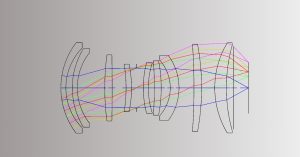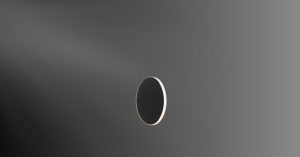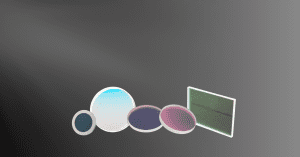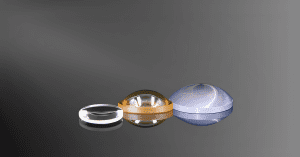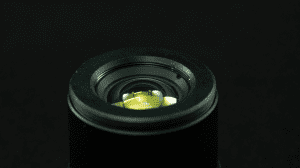Infrared Optics (IR Optics)
Avantier is a leading provider of high-quality infrared (IR) optics, offering a diverse range of products, including lenses, prisms, windows, mirrors, and laser and imaging assemblies. They utilize cutting-edge diamond turning machines to achieve sub-nanometer surface finishes and sub-micrometer form accuracies, ensuring unparalleled precision and surface quality in their optical components.
Our diamond turning machines play a pivotal role in producing sub-nanometer level surface finishes and sub-micrometer form accuracies. Each IR optical component is meticulously crafted to meet your exact specifications for various IR Optics applications. The ability to customize ensures that our products align precisely with your needs.
Through our diamond fly cutting machine, we can create precision diffraction gratings and linear elements on optical components with contoured diamond shapes. This cutting-edge process expands the range of possibilities for infrared optics design and application.
Wide Range of IR Substrates and Anti-Reflection Coatings
We offer a wide selection of IR substrates, such as Zinc Selenide (ZnSe), Calcium Fluoride (CaF2), Zinc Sulfide (ZnS), Fused Silica, Silicon (Si), Germanium (Ge), Sapphire, Magnesium Fluoride (MgF2), Chalcogenides and GaAs, and provide multiple anti-reflection coating options to enhance the performance and durability of their IR optics. Avantier’s optics find applications in various fields, from high-power CO2 lasers to night-vision thermal imaging cameras, IR imaging, and spectroscopy.
- Optical Materials: Avantier uses a wide array of optical materials to ensure optimal performance in various applications. These materials include not only the standard IR substrates but also advanced optical materials such as chalcogenide glasses, which are known for their excellent transmission in the infrared spectrum and their ability to be molded into complex shapes.
Diverse Applications of Infrared Optics
Infrared optics find applications in various fields, ranging from high-power CO2 lasers operating at 10.6 μm to night-vision thermal imaging cameras (MWIR and LWIR bands), as well as IR imaging and spectroscopy. Our experienced team is well-equipped to provide comprehensive design support and consultation for your specific requirements. The infrared spectrum covers a wide range of wavelengths from about 0.7 µm to 1 mm, which is further divided into near-infrared (NIR), mid-wave infrared (MWIR), and long-wave infrared (LWIR). Each of these sub-regions requires specific optical materials and coatings to achieve optimal performance.
For customers looking to select the ideal IR optics for their needs, Avantier suggests considering the substrate and anti-reflection coating that offer prime transmittance for the desired wavelength. It’s important to evaluate the thermal properties of the IR substrate, including the index gradient and coefficient of thermal expansion, to ensure compatibility with thermally volatile settings. Additionally, considering the index of refraction and dispersion can offer greater flexibility in system design.
Selecting the Ideal Infrared Optics for Your Needs
The infrared region spans three sub-regions: near infrared (NIR), mid-wave infrared (MWIR), and far infrared (FIR). To make an optimal choice for your application, consider the substrate and anti-reflection coating that offer prime transmittance for your desired wavelength. For instance, germanium might be suitable for transmitting visible light in the MWIR, while sapphire may be ideal for NIR applications.
Considering Thermal Properties and Index of Refraction
Given the varying temperatures and potential heat exposure in many IR applications, it’s essential to evaluate the thermal properties of an IR substrate. Assess the index gradient and coefficient of thermal expansion (CTE) to ensure the substrate’s compatibility with thermally volatile settings. A high index gradient or CTE could negatively impact optical performance under extreme temperature fluctuations.
Exploring Index of Refraction and Dispersion
IR materials exhibit a wide range of index of refraction values. Germanium, for example, boasts an index of refraction of 4.0003, compared to MgF’s 1.413. This diversity enables greater flexibility in system design. Additionally, consider the dispersion, which measures the change in index concerning wavelength. A lower Abbe number (less than 55) indicates greater dispersion and classifies the material as flint, while a higher number signifies less dispersion and categorizes it as a crown material.
Avantier Benefits
- Custom coating: antireflection coatings (AR coatings) in visible, near-infrared, short-wave infrared, mid-wave infrared, long-wave infrared spectral ranges
- Cost-effective manufacturing
- Reliable: good performance in rugged environment with remarkable temperature change
- Sturdy: resistant to mechanical and thermal shocks
- All products compliant with ISO and MIL standards
- IR materials: Zinc selenide (ZnSe), Calcium Fluoride (CaF2), Zinc Sulfide (ZnS), Fused Silica, Silicon (Si), Germanium (Ge), Sapphire, Magnesium Fluoride (MgF2), Chalcogenides and GaAs
- Chalcogenide Glasses : Chalcogenide glasses are particularly valuable in IR optics due to their broad transmission range and ability to be molded into complex shapes. They are used in infrared imaging and other applications requiring precise control over light transmission and reflection.
Germanium Windows at Avantier
For germanium windows, Avantier offers high-quality products in various sizes, with customization options for specific applications. They provide cleaning and handling precautions, optimal storage conditions, and precise specifications for their germanium windows.
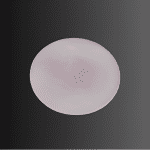
- Cleaning and Handling Precautions
Handle germanium optics with care due to hazardous dust. Wear gloves, wash hands after handling, and clean using reagent-grade acetone, ethanol, isopropyl alcohol, or methanol with lint-free germanium lens wipes. Beware of nitric acid’s potential to corrode neighboring optics or mounts. - Optimal Storage Conditions
Store germanium optics between 15 and 25 °C, controlling humidity below 30%. When not mounted, protect them with lens tissue to prevent damage. - Precision and Quality Specifications
Germanium Window with different sizes (2 mm – 100 mm)
Diameter: +0/-0.05 mm
Thickness: +0.01/-0.03 mm
Flatness: 1/2 Lambda
Parallelism: < 3 arc min
Polished surface finish:20-10 (no dig)
Bevel: protective bevel
Transmission rate: >47.5%@3.7-4.8um or according to customer’s specifications
Silicon Windows for Precise Optics at Avantier
Avantier offers silicon windows with excellent light transmission, free from scatter or diffraction. Available in diameters from 5 mm to 400 mm, these precision-made windows can be customized to meet your specific needs.
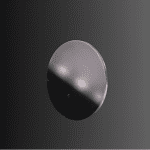
- Ideal Material Properties of Silicon
Silicon’s low density makes it perfect for weight-sensitive applications. With high transparency in the 1.2 – 7.0 µm region, it is ideal for IR applications. For CO<sub>2</sub> laser transmission, we offer float zone silicon windows without the Si-O absorption band. - Precision Manufacturing of Float Zone Silicon
Manufactured through vertical melting, float zone silicon is exceptionally pure, boasting higher conversion efficiency. It finds application in terahertz radiation, like solar arrays of satellites. - Factory Standards for Silicon Windows
Material: Silicon
Size: 5mm-400mm
Surface figure: l/10@633nm
Parallelism: 5″
Clear Aperture: >90% of central dimension
Antireflection Coating: @ 3-12 um
Surface Quality: 20-10
ZnSe Windows for Optical Clarity
ZnSe optical windows are formed from Zinc Selenide, offering excellent clarity and low IR absorption. They are resistant to thermal shock and widely used in FLIR and thermal imaging systems, as well as high-power CO2 laser systems.
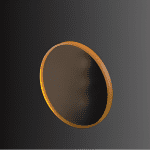
- Chemical Vapor Deposition for Purity
The ZnSe used in our windows is produced through Chemical Vapor Deposition (CVD) for extreme purity (99.999%). This process ensures the optical windows meet stringent quality standards. - Handling and Cleaning Precautions
Zinc Selenide windows are soft and should be handled by their edges with uniform pressure to avoid warping. Cleaning requires utmost care to avoid scratching the soft surface. We recommend using acetone or isopropyl alcohol and surgical-quality cotton balls. - Avantier Factory Standards for ZnSe Windows
Material: ZnSe
Irregularity (fringe): l/4
Diameter Tolerance: +0.0, -0.05mm
Thickness Tolerance: +/- 0.1mm
Clear Aperture: >85%
Parallelism: 5 arc min
Surface Quality: 40-20
Wavefront Distortion: l/4 per 25mm
Avantier offers a wide range of high-quality IR Optics, including germanium, silicon, and ZnSe windows. Our precision manufacturing and stringent quality controls ensure that our optics meet the highest standards for various applications. Whether you require standard sizes or custom specifications, our experienced design team is here to assist you in creating the perfect optical system for your specific needs. Contact us today to initiate the design process and schedule an introductory consultation. Experience the reliability and quality of Avantier’s custom IR Optics for your next optical system project.
WE CAN HELP YOU!
Contact us NOW for sales & expert advice.


